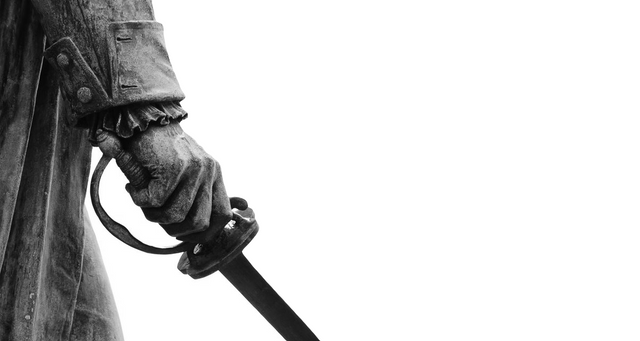[They Fight]: Part 1

Part 1 of a 3-part series which defines and asserts the necessity of Fight Dramaturgy. [They Fight] seeks to justify a historical approach to staging combat in Shakespeare’s Romeo and Juliet and traces the development of personal armed defense as taught by Elizabethan Masters to the modern era of representational violence in the Theatre (submitted to Shakespeare Quarterly in November 2007)
[They Fight]
These two seemingly simple words have, historically, incited more fear in directors than the actual manifestation of physical combat to which they allude. Given that Shakespeare is the most prominent playwright in the English language, it becomes inevitable that a confrontation between Shakespeare’s somewhat ambiguous direction and anyone serious about pursuing a career in the performing arts will arise.
Modern education and experience may equip the wayward director in terms of textual analysis, scansion, rhyme, meter, and a myriad of other script-based obstacles, yet it is this particular pairing of these “words, words, words” that will befuddle, confuse, frustrate, and mystify even the most stalwart of theatrical artists. Shakespeare has, however, provided us with an abundance of assumptions not in what that austere phrase asserts but, rather, omits.
Much like our modern audiences, Elizabethans were intimately familiar with the concept of violence. Duels, although outlawed during the reign of Elizabeth I, were rampant in Elizabethan society and increased dramatically during the reign of her successor, James I of Scotland.1 Such duels often took place in the evening so as to avoid the attention of the authorities and were often only witnessed by “Seconds” – trusted representatives responsible for finding a suitable place for the duel itself and, in some instances, engaging with the others’ Seconds.
Most duels of the period were fought to the death and were not, contrary to popular belief, stopped at the first drawing of blood.2 Typically, combatants would fight until one fled, was slain, or wounded so badly as to be unable to continue.3 Wounds suffered in duels of the period were often fatal, given the limited advancements in medical technology and the adherence to metaphysical suppositions.
Rogues, Ruffians and Swashbucklers
But not all duels followed the aforementioned protocol. Much like today, tempers ran short among the Elizabethan youth with public, verbally-heated exchanges often erupting into physical violence. Young and boisterous youth would often walk the streets with a small, handheld shield, known as a buckler, attached to their belts which would clang against their sheathed rapiers when they walked – sounding a clear challenge to any who could hear. This was commonly referred to as “swashing your buckle” and eventually led to the term “swashbuckling.”4
Shakespeare was undoubtedly accustomed to such choleric behaviors while bestriding the festering streets of London’s seedier districts, where prostitution, drunkenness, and criminal activities were nothing short of abundant. Indeed, it is through Mercutio’s self-described accusations of Benvolio, that we are given a glimpse into the irascible nature of Elizabethan youth:
“Thou! Why thou wilt quarrel with a man that hath a hair more or a hair less in his beard than thou hast. Thou wilt quarrel with a man for cracking nuts, having no other reason but because thou hast hazel eyes…Thou hast quarrell’d with a man for coughing in the street because he hath wakened thy dog that hath lain asleep in the sun. Didst thou not fall out with a tailor for wearing his new doublet before Easter? With another for tying his new shoes with an old riband?” - (Romeo and Juliet, Variorum Ed. III.i.16-27)
With such prevalent sensibilities, rational behavior quickly evaporates. Duels over trivial matters, often induced by the influences of alcohol, erupt to the delight and horror of many in Southwark’s crowded streets and provide Shakespeare with a mental canvas for his most celebrated work and, arguably, the most famous swordfight in all of dramatic literature.
(To Be Continued)
-
Bowers, Fredson Thayer. Elizabethan Revenge Tragedy 1587-1642. Princeton: Princeton UP, 1940, p.31. ↩
-
Thornbury, George Walter. Shakespeare’s England; or, Sketches of Our Social History in the Reign of Elizabeth. 2 vols.London: Longman, Brown, Green and Longmans, 1856, I, p. 192. ↩
-
Morsberger, Robert E. Swordplay and the Elizabethan and Jacobean Stage. Salzburg: Salzburg Studies in English Literature, 1974, p. 42. ↩
-
Lane, Richard. Swashbuckling, A Step-By-Step Guide to the Art of Stage Combat and Theatrical Swordplay. New York: Limelight Editions, 1999, p. 3. ↩
Posted from my blog with SteemPress : https://www.stephenmorganmackay.com/fight-part-1/